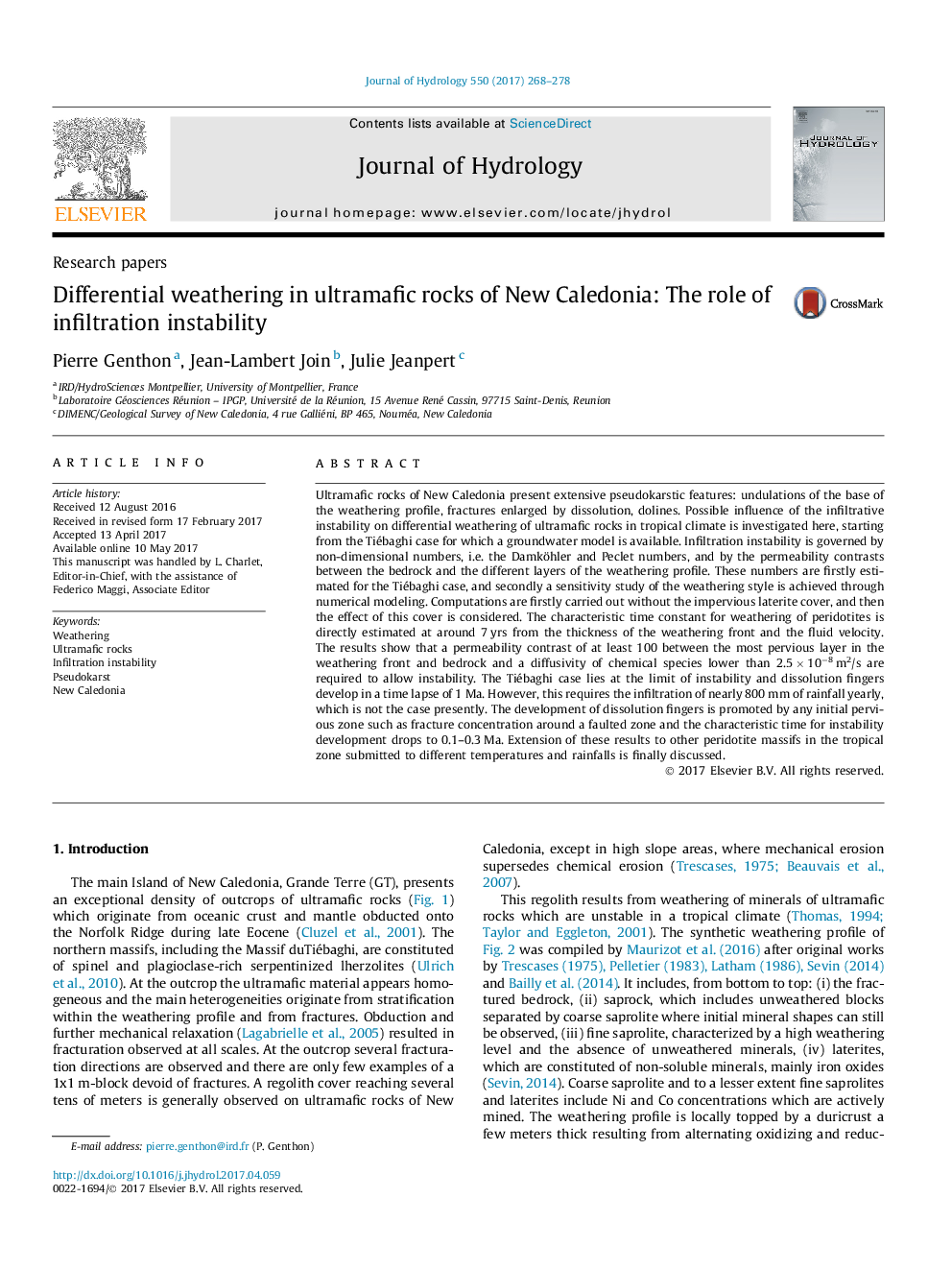| کد مقاله | کد نشریه | سال انتشار | مقاله انگلیسی | نسخه تمام متن |
|---|---|---|---|---|
| 5770755 | 1629904 | 2017 | 11 صفحه PDF | دانلود رایگان |

- Infiltration instability is considered during weathering of ultramafic rocks.
- A sensitivity study is built for this instability in the Massif du Tiébaghi.
- Dissolution fingers develop in nearly 1Â Myr.
- Fractures induce a localization and faster development of dissolution fingers.
Ultramafic rocks of New Caledonia present extensive pseudokarstic features: undulations of the base of the weathering profile, fractures enlarged by dissolution, dolines. Possible influence of the infiltrative instability on differential weathering of ultramafic rocks in tropical climate is investigated here, starting from the Tiébaghi case for which a groundwater model is available. Infiltration instability is governed by non-dimensional numbers, i.e. the Damköhler and Peclet numbers, and by the permeability contrasts between the bedrock and the different layers of the weathering profile. These numbers are firstly estimated for the Tiébaghi case, and secondly a sensitivity study of the weathering style is achieved through numerical modeling. Computations are firstly carried out without the impervious laterite cover, and then the effect of this cover is considered. The characteristic time constant for weathering of peridotites is directly estimated at around 7Â yrs from the thickness of the weathering front and the fluid velocity. The results show that a permeability contrast of at least 100 between the most pervious layer in the weathering front and bedrock and a diffusivity of chemical species lower than 2.5Â ÃÂ 10â8Â m2/s are required to allow instability. The Tiébaghi case lies at the limit of instability and dissolution fingers develop in a time lapse of 1Â Ma. However, this requires the infiltration of nearly 800Â mm of rainfall yearly, which is not the case presently. The development of dissolution fingers is promoted by any initial pervious zone such as fracture concentration around a faulted zone and the characteristic time for instability development drops to 0.1-0.3Â Ma. Extension of these results to other peridotite massifs in the tropical zone submitted to different temperatures and rainfalls is finally discussed.
Journal: Journal of Hydrology - Volume 550, July 2017, Pages 268-278